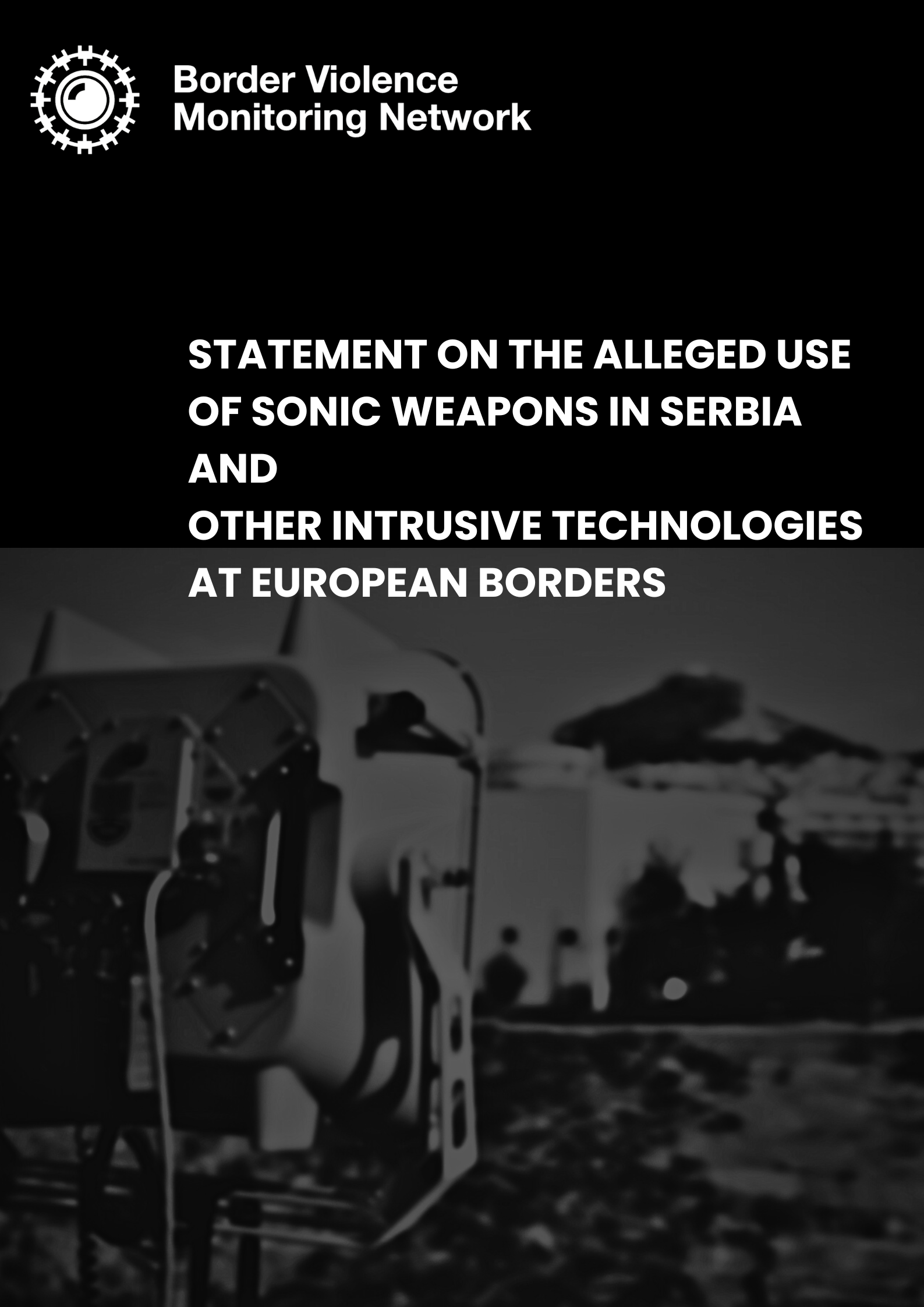On March 15, 2025, a so-called Long-Range Acoustic Device (LRAD), also known as a “sound cannon”, was reportedly used against hundreds of thousands of protestors in Belgrade, Serbia. BVMN previously reported the use of a similar device against people on the move during the so-called Special Military Operation in Northern Serbia in late 2023.
On November 1, 2024, parts of the main railway station at Novi Sad, Serbia’s second largest city, collapsed, resulting in 16 deaths. The tragedy, the result of years of state negligence, corruption, austerity measures, deregulation, and other neoliberal policies, represents another form of state violence. The people of Serbia, led by its students, started mass protests demanding justice and accountability. The most recent fatality, 18-year-old Vukašin Crnčević, succumbed to his injuries on the 21st of March.
On March 15, an estimated 325,000 people gathered in Belgrade, in one of the largest protests in Serbia’s history. During a 15-minute silent tribute to the then 15 victims, attendees reported hearing a piercing sound believed to come from a “sound cannon” causing panic and a brief stampede. Many suffered injuries, with some experiencing malfunctioning pacemakers and hearing aids. One individual reportedly endured seven consecutive heart attacks.
We believe this wasn’t the first time a weapon like this has been used in Serbia. BVMN reported the use of a similar type of LRAD during the so-called Special Military Operation against people on the move (POM) that took place between October 2023 and January 2024 in Northern Serbia. At the time, around 1,000 officers, including Serbia’s Gendarmerie, under the watchful eye of Frontex, carried out violent evictions and forced transfers of POM from informal camps to government-run centres, severely restricting their movement. The information obtained by BVMN suggests that an unknown gun-like sonic device was used during the evictions to make noise and scare POM.
“I tried to run away, but they caught me near the front gate. They hit me very hard. They beat me when I fell on the ground. I was very scared”. Testimony taken in October 2023, during the special military operation
According to media reports, the sound cannon used during the March 15 protest was procured from Genasys, a US company. The device was reportedly transferred from the US to Serbia through an Israeli firm in 2022. This also reminds us of the recently uncovered use of Israeli surveillance technology against people on the move at Greece’s Samos Closed Controlled Access Centre, which was revealed thanks to the work of our member organisations I Have Rights.
These incidents in Serbia insert themselves in a growing pattern of intrusive, violent policing methods tested on the marginalized Other, before being deployed at larger scale against the wider public. Reports from other border areas confirm that sound cannons have been procured to deter migrants from approaching the border, for example, at the land border between Greece and Turkey.
“Sonic weapons cause indiscriminate harm, posing a significant risk of permanent injuries. Their use may amount to torture or ill-treatment or violation of right to life. Law enforcement is permitted to use force only when absolutely necessary, meaning there should be no reasonable alternative and even then, it must be proportionate. Clearly, such practices against the civilian population, against protestors or people on the move, are disproportionate, meaning that they legally result in excessive use of force.”
– Fezile Osum, BVMN Legal Coordinator
The harms go far beyond the use of sound cannons. As our “Surveillance Technologies at European Borders” report series shows, surveillance technologies are becoming an integral part of the EU’s so-called Integrated Border Management Project, both inside and outside of the EU. These harmful technologies are often initially procured for border security and surveillance purposes and used on people on the move, and other marginalized groups, who are often in situations of legal uncertainty, which prevent them from seeking justice after the violation of their rights. Meanwhile, private military and tech companies, producing advanced border tech, many of whom are based in the US and Israel, are profiting from harmful border control and the crackdown against civil society.
The Serbian example shows that the struggle for migrant rights and justice for survivors of border violence intersects with the struggle to uphold democracy, freedom of peaceful assembly, and civic justice. It calls for unity to resist arbitrary state violence everywhere in Europe, and beyond.
For further information please contact:
press@borderviolence.eu

